HOME: www.hiltonpond.org
THIS WEEK at HILTON POND Subscribe for free to our award-winning nature newsletter (Back to Preceding Week; on to Next Week) |
Join us for the |
|
SNOWMAGEDDON? All text, maps, charts & photos © Hilton Pond Center In early December 2018, TV weather folks around the country sounded an alarm for a really big snow event aimed at the southeastern U.S. This "storm of a lifetime" was predicted to begin late on the 8th as copious amounts of moisture from the Gulf of Mexico collided with frigid arctic air from an unusual southward dip in the jet stream. Bread, bottled water, milk, and toilet paper flew off grocery store shelves from north Georgia through Virginia, and the region's hardware stores saw a big up-tick in sales of gas-powered electric generators. Our favorite "Snowmageddon" weather map (above) was produced by Dr. Ray Russell, an Appalachian State University computer science professor who manages RaysWeather.com. His forecasts focus on the Blue Ridge Province of the southern Appalachians but occasionally include York County SC, wherein lies Hilton Pond Center. Ray predicted nearly two feet of snow for North Carolina's northern mountains, with somewhere between one and five inches expected for York and vicinity.
All text, maps, charts & photos © Hilton Pond Center It turns out Ray was spot-on with his snow forecast. Friends in the high elevation counties of Ashe and Watauga (towns of Jefferson and Boone) in North Carolina got about 16" of white stuff on 8-9 December, Although the Center didn't get slammed by snowfall, what little we got STILL brought in lots of birds--including some species we hadn't seen since last winter, or even before that. Our most exciting finds on snow day were two Fox Sparrows (FOSP) caught together in the same trap. For the folks at Hilton Pond Center, one of those was even more exciting than the other.
All text, maps, charts & photos © Hilton Pond Center We don’t get many Fox Sparrows at Hilton Pond--these two were just the 42nd and 43rd banded locally in 37 years--and they occur here only in winter. Fox Sparrows breed primarily north of the US-Canada border up to Alaska, with several color morphs so different some taxonomists split them into four separate species. Historically, we’ve seen the rusty "fox-colored" morph almost every time we’ve had a snow event, so we weren't surprised two of them showed up at midday on 9 December after white stuff began covering the ground.
All text, maps, charts & photos © Hilton Pond Center We happen to like Fox Sparrows--they’re probably our favorite of all the sparrow species--but that’s not why the first one we handled during the snowstorm was so exciting. You see, that particular FOSP happened to be our 68,000th bird banded at the Center since 1982--and that’s a LOT of birds! We're kinda pleased #68,000 AND #68,001 were Fox Sparrows and hope you enjoy gazing at our portrait above of this big, chunky, rusty-colored bird that comes down from Canada and seems to show up locally whenever the snow flies. (NOTE: Later in the day we actually caught a THIRD Fox Sparrow; it, too, was of the rusty race.)
All text, maps, charts & photos © Hilton Pond Center So, over two days (8-9 December) Hilton Pond Center got 1.5" of what was best described as slush--a mixture of frozen rain, wet snow, sleet, graupel, and ice pellets. Nonetheless, since this white stuff covered the ground completely, birds accustomed to foraging in the outback were driven toward our feeders and traps. On 8 December we observed 18 species and banded 32 individuals shown below (banding numbers in parentheses).
Six species we had been observing regularly at the Center did NOT show in the snow: Ruby-crowned Kinglet, Pine Warbler, Brown Thrasher, White-breasted Nuthatch, Red-bellied Woodpecker, and Red-shouldered Hawk. Nor did we see our customary American Crow or either of the vultures; the latter were probably sitting tight during inclement weather, keeping their big wings as dry as possible.
All text, maps, charts & photos © Hilton Pond Center When the going got rough during "Snowmageddon" our neighborhood birds were all over the feeders, but as soon as the sun came out and temperatures rose on 11 December the snow began melting and our birds deserted us. We're not saying these feathered creatures are ingrates that took advantage of the Center's generous hospitality during the snowstorm, but we ARE heretofore referring to them as FWF, or "Foul-Weather Fowl"--sort of the inverse of "fair-weather friends." One of only two fair-weather captures on the 11th was a pink-billed, very dark Dark-eyed Junco (see photo above), Junco hyemalis, formerly called Slate-colored Junco. Our eastern juncos--which occur at Hilton Pond only late fall through early spring--sport dorsal and bib feathers that range from very pale gray to the dark slate of the bird above. Some authorities say the darkest juncos are always males; this may be true, but in our experience those that breed at higher elevations in the southern Appalachians are darker--and bigger--than their relatives that migrate down from up north. Although some of our Hilton Pond juncos have varying amounts of pale brown on their backs (see file photo, below left), We called our bird in the top photo a dark male Dark-eyed Junco of the eastern race--confirmed because his wing measure of 78mm was too big for a female. This individual also revealed the one characteristic all races and sexes of juncos have in common--white outer tail feathers that flash as the bird flies away from the feeder. All text, maps, charts & photos © Hilton Pond Center
All text, maps, charts & photos © Hilton Pond Center Once the temperature rose and precipitation stopped, it only took a couple of days for our inch-and-a-half snow to melt away--once again revealing an omnipresent layer of leaf litter. Also obvious was a thicket of yellow Forsythia with leaves (above) that seemed to glow under a gray December sky. Long before we moved to what is now Hilton Pond Center, previous owners planted a few Forsythia shrubs between the old farmhouse and the pond; these have done quite well. Although Forsythia is not a native species (likely of Asian origin), we decided not to remove these shrubs when we arrived in 1982. (Say what you will, but hardcore native plant enthusiasts we are not.) Since then the Forsythia has thrived and expanded, propagating via runners into a substantial ticket that provides year-round shelter for everything from nesting Eastern Towhees and North Cardinals to wintering Dark-eyed Juncos and White-throated Sparrows. Since Forsythia is essentially harmless to the local environment--if it weren't growing where it is we probably wouldn't install anything else--we just prune it back every now and again. It can't escape and become invasive because it's surrounded by walking trails. In a few months the thicket will produce a plethora of bright yellow blooms (above right), usually before any other showy spring flowers have appeared. Those March blossoms and these yellow leaves in early December provide welcome color for Hilton Pond Center at two different times of the year. All text, maps, charts & photos © Hilton Pond Center NOTE: Below is a riveting first-person account of what it took to fix a malfunctioning weather station rain gauge under dire conditions at Hilton Pond Center. Never fear, the writer suffered no illness, injury, or frostbite during the procedure. :-)
All text, maps, charts & photos © Hilton Pond Center I know many Hilton Pond Facebook friends regularly check current weather conditions at the Center. Lately, several of them have been curious as to why--despite the recent snowstorm and heavy rainfall--the Center's Web page on Weather Underground (Station KSCYORK4) indicated we had no precipitation at all. The battery in the usually dependable Davis VantageVue wireless weather station is fresh (I replaced it back when weather was much balmier) and has been recharging daily via the solar panel; thus, it was apparent something was wrong with the rain gauge module. On 14 December 2018 I decided I'd better investigate--which turned out to be no easy task. First, I had to wait for a lull in the spit-rain that had been falling most of the morning, so I closely watched weather radar until it showed precipitation would abate--at least for a while. Since the weather station is mounted on a tall mast embedded in the bottom mud of the pond about 25 feet from shore, I had to don hat, coat, and chest waders and carry a 6-foot stepladder out to the mast. Upon entering the pond the first thing I noticed was the left ankle of the waders had developed a small leak, allowing very cold pond water to dribble in. Brrrr.
All text, maps, charts & photos © Hilton Pond Center Despite this unpleasantness I forged ahead, noting the pond itself was at overflow stage (see photo above taken on a sunnier December day) and couldn't possibly be any deeper. (In midsummer during drought years the pond gets so low it's possible to walk all the way out to the weather station without getting wet.) As I churned forward pond waters became ankle-deep . . . then knee-deep . . . then waist-deep, I wondered if I could make it all the way to the station mast and was relieved when the water finally stopped within 6" of the top of my chest waders. Reaching the weather station, I leaned the ladder against the mast and gingerly made my way up, being careful to maintain my balance. Falling off the ladder into a cold pond while wearing chest waders was not something I wanted to experience. After blowing out the gauge and wiping it clean, I screwed it back in place and made my way back down the ladder as rainfall continued. With no small effort I pulled the ladder out of the bottom muck and headed back to shore, noting that the left leg of my waders was filling with very chilly water. In the end I got ashore safely, toted the ladder up the hill, took off the waders on the front porch of our old farmhouse, and quickly went inside to change clothes and huddle close to the woodstove to warm up and dry out.
I'm happy to say that within a few minutes I could see the rain gauge was operating properly and sending a signal to the base unit. Beginning at 11:59 a.m. on the 14th--and after a big false spike that occurred as I was re-installing the gauge (see chart above)--the blue line on the graph shows rainfall did continue AND was being measured!, right up until midnight. The bottom line is that now when you check Weather Underground for current conditions at Hilton Pond Center you once again will get accurate, up-to-date readings for temperature, dew point, wind speed/direction, barometric pressure, AND precipitation! Here's that link, complete with the Center's weather cam showing a nearly real-time backyard view of Hilton Pond itself: WU Station KSCYORK4 Next task: Patch the chest waders! Happy Weather Watching! All text, maps, charts & photos © Hilton Pond Center
A Ruby-throated Hummingbird (above) silhouetted at dusk 6,000 RUBY-THROATS, To celebrate the banding of our 6,000th Ruby-throated Hummingbird (color-marked immature male, above) during the past 35 years of research, Hilton Pond Center is undertaking a fund-raising effort in support of "Operation RubyThroat: The Hummingbird Project." Our goal from now through the end of 2018 is to raise ONE DOLLAR for each of the 6,193 hummers banded locally through since 1984. If you'd like to support our on-going study of hummingbird migration, site fidelity, longevity, and population dynamics here in the U.S. and in Central America, please click on one of the links below to send a tax-deductible donation. (You can also donate through our Facebook fundraising page.) Checks also can be sent to Hilton Pond Center at: All contributions are tax-deductible on your Don't forget to scroll down for Nature Notes & Photos, |
|---|
|
"This Week at Hilton Pond" is written and photographed by Bill Hilton Jr., executive director of Hilton Pond Center for Piedmont Natural History
|
|
|
Please refer "This Week at Hilton Pond" to others by clicking on this button: |
Comments or questions about this week's installment? Send an E-mail to INFO. (Be sure to scroll down for a tally of birds banded/recaptured during the period, plus other nature notes.) |

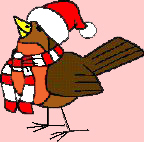
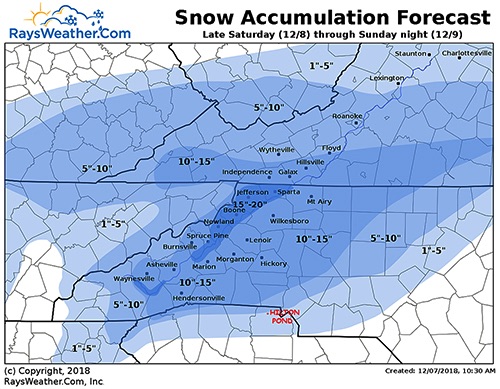

 followed by another inch or three a day or so later.
followed by another inch or three a day or so later. 
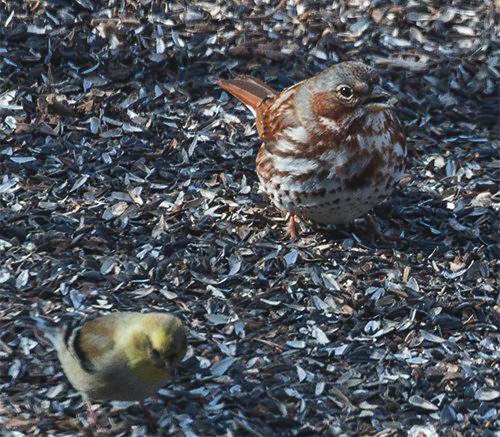
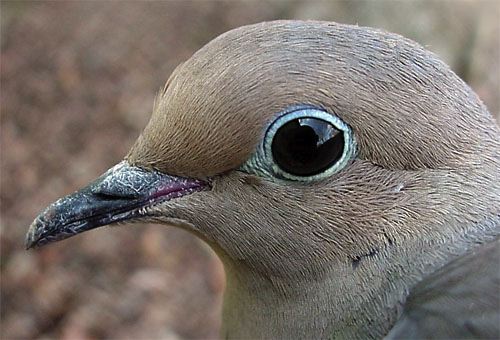
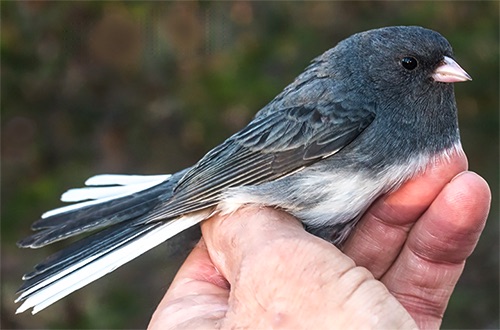
 individuals elsewhere in North America may have rusty backs or white wing bars or pink flanks--all of which creates a taxonomic nightmare. Most ornithologists agree there are actually five
individuals elsewhere in North America may have rusty backs or white wing bars or pink flanks--all of which creates a taxonomic nightmare. Most ornithologists agree there are actually five 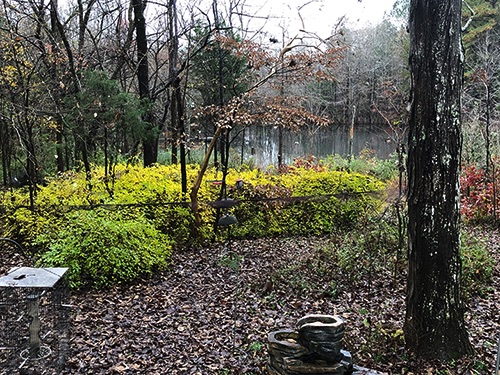
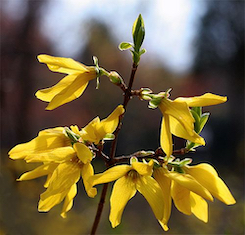 In fact, the Forsythia patch is a great escape haven for a wide variety of birds when marauding hawks swoop toward our feeders.
In fact, the Forsythia patch is a great escape haven for a wide variety of birds when marauding hawks swoop toward our feeders.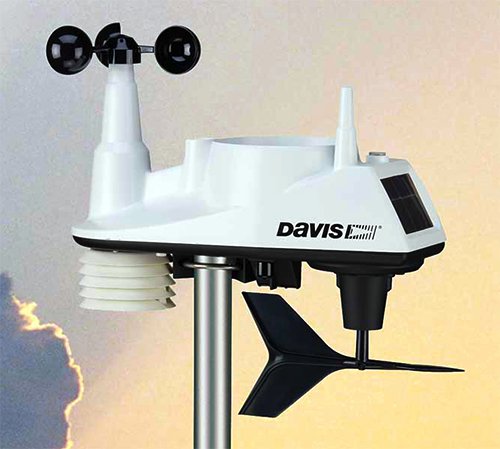
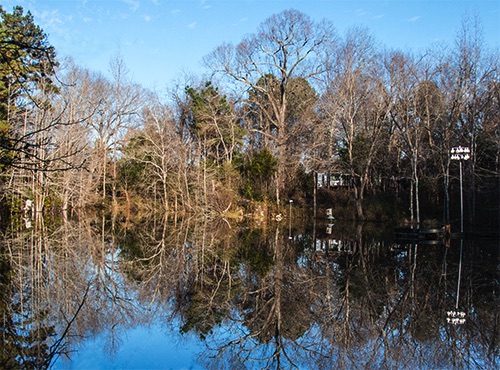
 About then the clouds burst and rain came down hard as I unscrewed the gauge and carefully brought it in close for examination through glasses covered with water droplets. As suspected, the device had become fouled with tiny particles of leaves that must have blown in during a heavy windstorm--perhaps one of those hurricanes this past fall. It didn't help that a wayward spider had formed an egg case in the middle of the tipper spoon that collects and measures out rain.
About then the clouds burst and rain came down hard as I unscrewed the gauge and carefully brought it in close for examination through glasses covered with water droplets. As suspected, the device had become fouled with tiny particles of leaves that must have blown in during a heavy windstorm--perhaps one of those hurricanes this past fall. It didn't help that a wayward spider had formed an egg case in the middle of the tipper spoon that collects and measures out rain.
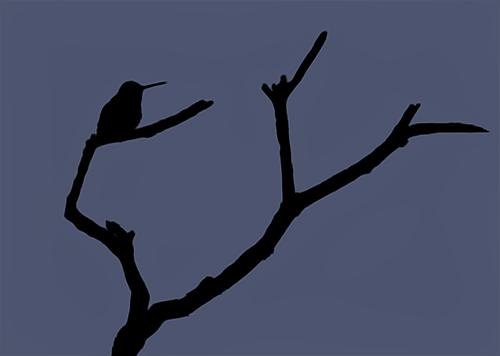









 Oct 15 to Mar 15:
Oct 15 to Mar 15: